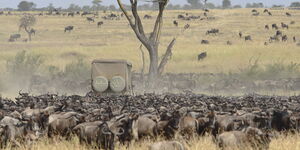Two elephant tusks fitted with GPS trackers have unveiled a path followed by ivory obtained from poaching.
The two fake tusks were embedded with trackers and then planted in the black market at a village in Central African Republic (CAR), to follow an ivory smuggling route in Central Africa.
The bogus tasks reportedly moved from CAR, entered an area called Kafia Kingi enclave, before making way into Sudan.
Kafia Kingi area is associated with the outlawed Lord Resistance Army group.
The investigative report by National Geographic reporter Bryan Christy, raises a red flag on illegal ivory trade in East Africa.
“East Africa is ground zero for much of the poaching,” the report notes.
Christy highlights that most of the poachers in the East African region are locals who include poor villagers and unpaid park rangers.
“Locals, including poor villagers and unpaid park rangers, are killing elephants for cash -- a risk they’re willing to take because even if they’re caught, the penalties are often negligible,” the report, How Killing Elephants Finances Terror in Africa, notes.
In Central Africa, however, poaching is driven by Militias and terrorist groups funded in part by ivory.
The groups are said to be poaching elephants, often outside their home countries, and even hiding inside national parks.
They’re looting communities, enslaving people, and killing park rangers who get in their way.
Approximately 36,000 African elephants are killed every year for their tusks
Experts estimate that the animal may be extinct in the wild by 2020 if this rate is not abated.
Meanwhile, poaching continues to be a menace to the tourism sector in Kenya with the government weighing in on the illegal trade.
5 Jumbos were recently felled in the Tsavo-West National park.

Supreme Court Judge Dies Breaking News











